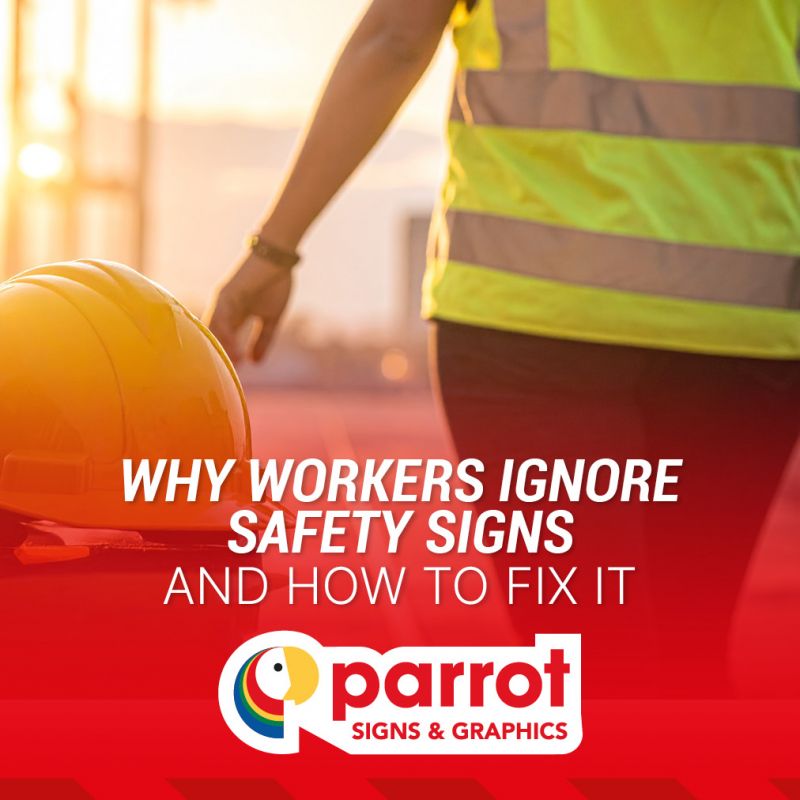Why Workers Ignore Safety Signs and How to Fix It
Tue 21st October 2025Safety signs are everywhere on construction sites and in manufacturing plants, but here’s the uncomfortable truth: just because a sign is on the wall doesn’t mean it’s doing its job. Many managers notice that, over time, staff stop paying attention to them. The danger then isn’t only that the sign has lost its impact, it’s that the workers assume they already “know it all” and tune out, leaving gaps in awareness and safety.
So why do workers ignore safety signs, and more importantly, what can be done to change this?
Familiarity breeds complacency
When a safety sign has been in the same spot for months or even years, employees can become blind to it. They walk past it dozens of times a day, and after a while it blends into the background. This is often called sign fatigue. If people no longer notice the signs, the reminders aren’t working.
Fix: Refresh signage regularly, whether that’s rotating designs, updating materials, or repositioning signs where workers don’t expect to see them. A small change can make a big difference in getting people to look again.
Poor placement and visibility
Even the clearest safety message will fail if no one sees it. Signs hidden behind equipment, too high up on a wall, or competing with visual clutter won’t do their job. In busy construction and manufacturing environments, workers often rely on quick visual cues, so placement is critical.
Fix: Walk the site with fresh eyes. Check whether signs are genuinely in the line of sight where the risk occurs. A well-placed sign at eye level, directly before a hazard, is far more effective than one tucked away in a corner.
Read more about how to avoid mistakes in safety sign placement.
The message isn’t clear
Workers ignore signs when the wording or symbols are confusing. If someone has to stop and puzzle over a sign, chances are they won’t. Similarly, if the design feels outdated or inconsistent, it can reduce trust in the information.
Fix: Stick to recognised standards and symbols so the meaning is instantly understood. Simple, consistent messaging ensures workers can process the instruction quickly, even when they’re focused on the job at hand.
Overload of information
Too many safety signs in one place can have the opposite effect of what’s intended. Instead of heightening awareness, it can overwhelm workers, causing them to tune everything out. If “everything is important,” nothing stands out.
Fix: Prioritise. Use safety signs where they’re needed most and remove duplicates or irrelevant ones. It’s better to have fewer signs that workers take seriously than a wall of text no one reads.
Building a culture, not just signs
Ultimately, safety signs are tools and they work best as part of a wider safety culture. If workers feel engaged in safety discussions and understand why the signs matter, they’re more likely to respect them. Training sessions, toolbox talks, and even encouraging staff feedback on signage can help reinforce their importance.
Read more about the psychology behind safety signs.
Finally....
Safety signs are vital, but they’re not magic. If you notice that workers are ignoring them, it’s a signal to reassess design, placement, and communication. By keeping safety signage fresh, visible, and meaningful, and by embedding it within a strong safety culture, you’ll ensure those signs do what they’re meant to: keep people safe.
